
Over the past two decades, VMware has built an enviable enterprise customer base of half a million unique customers for its technology to virtualize X86 servers. But enterprises have been feeling the winds of change for several years now as cloud services have begun to offer customers an alternative to operating their own on-premise infrastructure with all the complexity and cost that goes along with that.
VMware’s problem, as The Next Platform has previously pointed out, is in staying relevant while continuing to hold onto its existing ground where it has built considerable market share. This means developing some kind of cloud proposition without having it turn into an on-ramp for customers to simply roll across to Amazon Web Services or Microsoft Azure or Google Cloud Platform, taking their workloads and license money with them.
The company’s first stab at this was to build its own public cloud called vCloud Air, but that strategy met with only limited success, leading to VMware selling the venture in 2017 to French cloud hosting company OVH. Since then, the firm’s strategy has instead been to partner with the big public clouds while developing the management tools and other technologies to help customers link their on-premise VMware infrastructure with them as seamlessly as possible.
The progress that VMware is making in this could be seen at the company’s VMworld conference held in Las Vegas, where it detailed updates to its vRealize Cloud Management suite to let users automate operations across cloud and on-premise deployments, and also to its NSX network virtualization platform to provide connectivity services for applications that may be distributed across multiple clouds.
In fact, VMware states that its aim is to make clouds “invisible” for enterprise customers, according to Taruna Ghandi, director of product marketing in VMware’s Cloud Management Business Unit. This means that the underlying infrastructure gets hidden away beneath an operations layer that supports both on-premise servers running vSphere and cloud-based infrastructure such as VMware Cloud on AWS (which for some reason VMware abbreviates to VMC). This layer underlies a programmable provisioning layer, which in turn supports a layer of application services on top, as seen in this slide.
“We are offering our customers proactive capacity and performance management as well as unified visibility across their private cloud, across VMware Cloud on AWS and extending to multiple public clouds,” says Ghandi. “Layering on top of that is this abstraction layer to provide programmable provisioning to our customers. What we are doing is exposing a common set of APIs across these multiple clouds,”
In the VMware stack, these layers are managed by vRealize Operations in the case of infrastructure and vRealize Automation at the provisioning layer. These two have now been tweaked to work better together to optimize performance and workload balancing. As an example, they can support intent-driven management, based on customer-defined desired outcomes, to fully automate workload balancing across clusters.
This also enables a new host-based placement strategy for workloads, which is described by VMware as a way to automate distributed resource scheduling based on intent.
“This is what customers can use not only to control how workloads are balanced across clusters, but also to make sure that my Windows workloads land on my Windows hosts and Linux workloads on Linux,” says Ghandi.
Being able to control exactly where workloads will be deployed should prove invaluable to customers trying to do license separation or control license costs, according to VMware.
The updated vRealize Automation 7.5 adds features such as a ServiceNow Plugin, while for developers there is now configuration management support via Ansible and the ability to provision and manage Kubernetes clusters for VMware’s Pivotal Container Service (PKS) for deploying applications.
Meanwhile, vRealize Operations 7.0 has expanded capacity management capabilities, based on a predictive capacity and cost analytics engine. This enables new what-if scenarios that can model new workloads and advise if capacity may need to be expanded, as well as help plan for a migration of workloads to a VMware Cloud on AWS deployment.
“A customer can take a set of workloads and say ‘hey, if I were to move this to VMware Cloud on AWS, what would be the cost? What kind of capacity would I need?, and so on,” Ghandi explains.
Also new in vRealize Operations is an updated management pack for AWS that adds support for more than 20 AWS services, an updated Kubernetes management pack, and a new storage fabric management pack.
But it isn’t just the management level where VMware is delivering new hybrid cloud capabilities. At VMworld, the firm announced a new version of its NSX network virtualization platform, NSX-T Data Center 2.3, which now provides multi-cloud networking with support for AWS and Microsoft Azure as well as on-premise infrastructure.
NSX-T is a cross-platform version of VMware’s original NSX, which is based on technology it gained from the acquisition of Nicira and is tightly integrated with vSphere. NSX-T not only supports other hypervisors, such as the open source KVM, but has been developed from the outset to provide network services for workloads running on both virtual machines and containers.
NSX-T Data Center 2.3 extends this support to bare metal hosts, including Linux-based workloads running on bare-metal servers and containers running on bare-metal servers without a hypervisor, VMware claimed. It also adds support for VMware Cloud on AWS.
Because NSX is deployed to every node in the infrastructure, it is an ideal place to implement security controls, a fact that VMware has been keen to exploit. This version of the platform brings new APIs to define policy driven by natural language, enabling administrators to express policies in a declarative fashion.
VMware also announced a partnership with datacenter switch upstart Arista Networks that will see closer interoperability between Arista’s CloudVision platform and NSX. The ultimate aim of this is to allow NSX security policies to be enforced natively on Arista switches across any enterprise network that operates with their kit, according to VMware.
We’ve mentioned VMware Cloud on AWS several times now. This is essentially an entire VMware-based stack, incorporating vSphere, vSAN software defined storage and NSX, packaged together to act as essentially a miniature private cloud, but using AWS as its infrastructure layer.
However, this is actually just one incarnation of the Cloud Foundation platform, which VMware developed so that it can be deployed either onto a public cloud, as with VMware Cloud on AWS, or onto physical hyperconverged infrastructure such as the VxRack SDDC kit from VMware’s parent company, Dell EMC. (Other public clouds offering it include IBM Cloud, Rackspace and CenturyLink, but VMware Cloud on AWS is unique because it is managed and sold by VMware).
This can be seen as another part of VMware’s hybrid cloud play, since Cloud Foundation delivers a consistent infrastructure platform both on-premises and in the cloud, even if there is something a little Heath Robinson about deploying a private cloud enclave onto a public cloud.
At VMworld, VMware detailed that VMware Cloud on AWS support has now been extended from Amazon’s US and Europe regions to the Asia Pacific region with a new presence in Sydney, Australia. The entry price has now been reduced by 50 percent and there is a new minimum configuration that requires just a three host cluster.
VMware Cloud on AWS has also now gained the ability to expand its storage capacity beyond the nodes used to host the VMware stack itself and access Amazon Elastic Block Store (EBS) volumes as well. This enables customers to take advantage of the economics of AWS to lower the cost for storage intensive workloads, according to VMware.
The overall picture is that VMware appears to be making a concerted effort to support customers with hybrid cloud or multi-cloud ambitions, providing support for the major public clouds in its management suite and enabling users to host workloads on those clouds as necessary.
It could be argued that this is a move that VMware had to make or risk seeing its customers gradually migrate workloads to the cloud anyway. Can this strategy succeed? Well, despite regular gripes about licensing costs, enterprise customers are more concerned with a solution that does what they need, and if VMware can make hybrid cloud work seamlessly enough to keep its enterprise users happy, there is no reason to think that its considerable customer base will be defecting anywhere else.

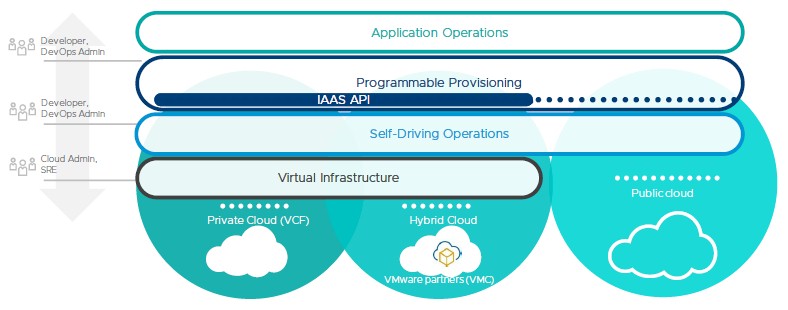
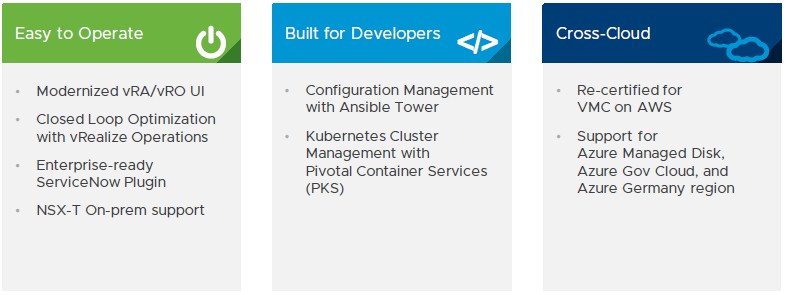
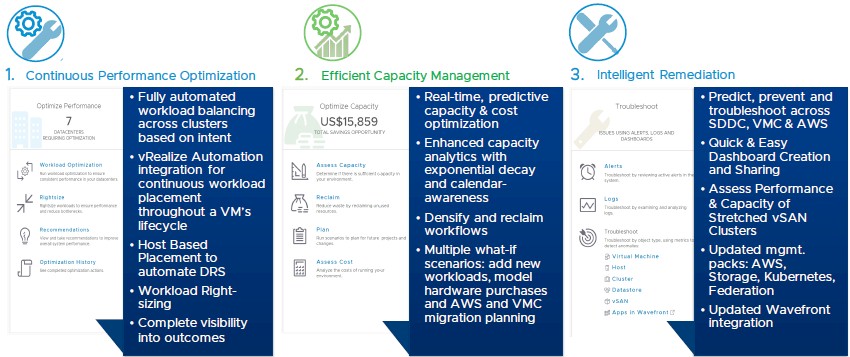
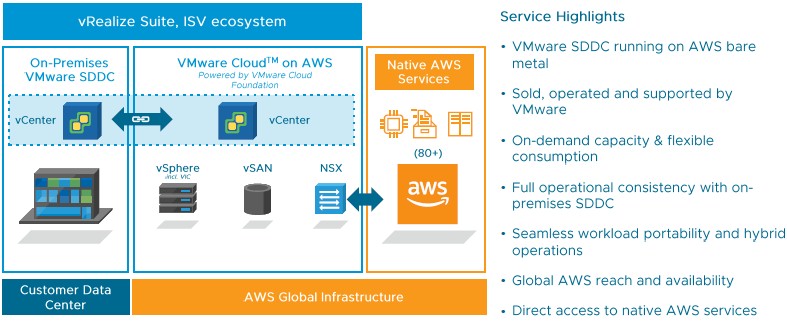
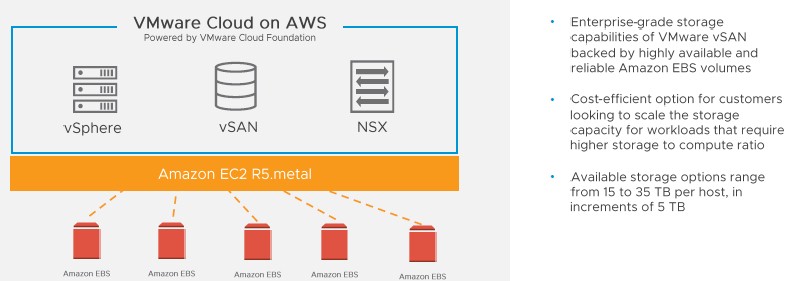



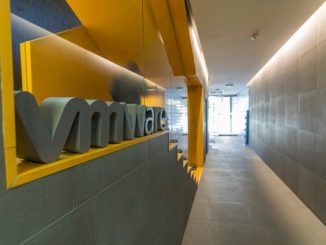
Be the first to comment